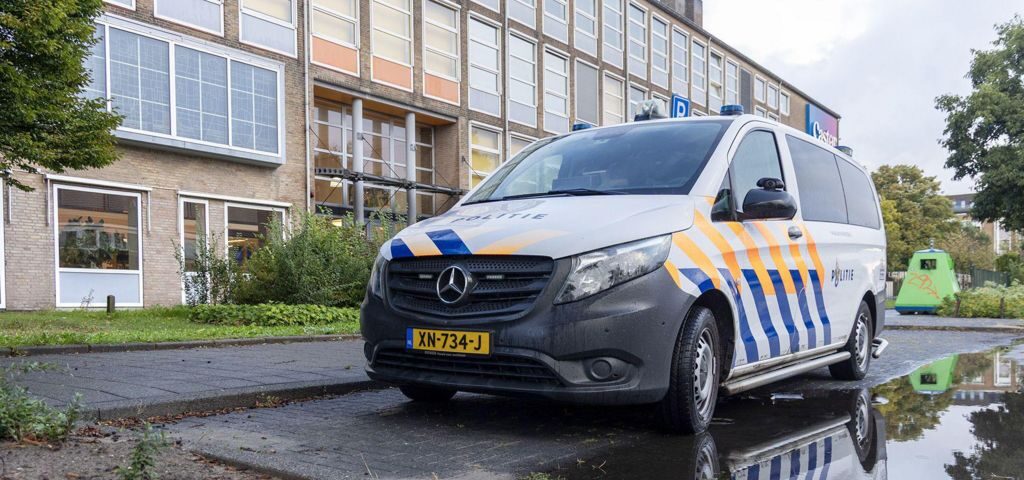In the quiet Dutch towns of Beverwijk and Heemskerk, a disturbing wave of youth violence and the circulation of abusive videos on social media have led to the unprecedented closure of all five secondary schools. This drastic measure, taken on September 12, 2025, aimed to restore calm amid escalating tensions between rival youth groups. The situation, marked by vandalism, physical assaults, and humiliating videos, has sparked fear among residents and raised urgent questions about youth behavior, social media’s role, and community safety. This article explores the causes, impacts, and responses to this crisis, offering insights into how communities can address such challenges.
The Crisis Unfolds in Beverwijk and Heemskerk
The decision to close schools was a direct response to escalating violence that began with vandalism at a Beverwijk school. The unrest quickly spread, fueled by social media, leaving parents, students, and authorities grappling with fear and uncertainty. The closures reflect the severity of the situation and the need for immediate action.
What Sparked the Violence?
The trouble reportedly started with a feud between two rival youth groups, leading to significant damage at a school in Beverwijk. A 22-year-old man was arrested for vandalism, but the situation escalated when fighting broke out, leaving one boy seriously injured. Unverified TikTok videos showing horrific acts, like a boy being kicked in the head with his mouth taped, surfaced online, amplifying community distress.
The Role of Social Media
Social media platforms, particularly TikTok, have been central to this crisis, with videos of abuse and threats circulating widely. These “very nasty videos,” as described by the mayor, include humiliating acts like ripping off victims’ pants and filming their genitals, which are then shared online, intensifying fear and trauma.
Why Schools Were Closed
The mayors of Beverwijk and Heemskerk ordered the closure of five secondary schools—Skills, Castor College, Dalí College, Forta, and Fourteens—to prevent further violence. Emergency measures allowed police to conduct preventative searches and disperse groups, aiming to restore safety. The closures disrupted education but were deemed necessary to protect students.
Community Impact
The closures sent shockwaves through the community, with parents and students warned to avoid schools due to fears of shootings and further violence. Local sports clubs even advised youth not to go out alone at night, highlighting the pervasive sense of unease.
Understanding Youth Violence in the Netherlands
Youth violence isn’t new, but its intensity and visibility have grown with social media’s influence. The Beverwijk and Heemskerk incidents reflect broader trends in the Netherlands, where rival youth groups often clash over status, envy, or territorial disputes, sometimes glamorized in drill rap videos or online challenges.
Rising Trends in Youth Violence
Recent reports show a surge in youth-related violence across Dutch cities. For example, in Schiedam and Rotterdam, police arrested 13 suspects linked to armed robberies and stabbings, driven by “hate, envy, and struggle” rather than drugs. The accessibility of weapons like firearms and heavy-duty fireworks has worsened the problem.
Psychological Violence on the Rise
The Dutch Education Inspectorate noted a rise in psychological violence in schools, with 2,317 cases reported last school year, up from 2,152 the previous year. This includes bullying, humiliation, and online abuse, often amplified by social media, as seen in Beverwijk and Heemskerk.
The Role of Online Platforms
Online platforms like TikTok, Minecraft, and Roblox have become breeding grounds for harmful behavior. In some cases, vulnerable children are groomed in chat groups to commit violence or sexual abuse, with 25 Dutch kids identified as part of an international “Com” movement under investigation by the FBI and Interpol.
Social Media’s Double-Edged Sword
While social media connects people, it also enables the rapid spread of harmful content. Videos of violence in Beverwijk and Heemskerk were presented as “victories” by perpetrators, fueling further aggression. AI-generated videos of explosions at schools added to the panic, showing how technology can escalate real-world conflicts.
The Broader Context of Violence in Dutch Schools
The Beverwijk and Heemskerk closures aren’t isolated. Dutch schools have faced increasing challenges with violence, from physical assaults to sexting and online harassment. The Education Inspectorate reported a rise in severe, long-term bullying, sometimes lasting years, highlighting systemic issues in addressing youth behavior.
Historical Precedents
The Netherlands has seen school-related crises before. In 1977, South Moluccan activists took 105 children hostage in Bovensmilde, a stark contrast to today’s youth-driven violence but a reminder of how schools can become focal points for unrest. Modern incidents, however, are often peer-driven and amplified by digital tools.
Sexting and Online Abuse
Sexting, classified as a crime under Dutch law, is a growing concern. Schools are required to have policies on sexting, but many prefer mediation over legal action, reflecting the Dutch “poldermodel” of consensus. This approach, while empathetic, can leave victims vulnerable when incidents are downplayed.
Systemic Challenges
The Dutch system faces hurdles in addressing violence. Long wait times at Veilig Thuis, the national domestic violence hotline, and a shortage of shelter spaces for victims highlight gaps in support. Schools also struggle with teacher training and clear protocols for handling abuse, leaving some incidents unaddressed.
Government Response
Dutch Justice Minister Foort van Oosten called the school closures “incredibly sad,” emphasizing children’s right to education. Police have been granted emergency powers, but broader solutions—like better mental health support and stricter social media regulations—are still needed.
Personal Reflection: A Parent’s Perspective
As a parent, hearing about school closures due to violence hits hard. I remember my own kids coming home upset after seeing a fight at school—it’s unsettling to think their safe space could turn chaotic. The idea of teens filming and sharing abuse videos is even more chilling. It makes you wonder: where are we failing these kids? Are we too quick to blame phones and not quick enough to teach empathy? This crisis in Beverwijk and Heemskerk feels like a wake-up call for all of us.
Comparing Responses to Youth Violence
| Approach | Description | Pros | Cons |
|---|---|---|---|
| School Closures | Temporarily shut schools to prevent violence. | Immediate safety measure; reduces risk of harm. | Disrupts education; doesn’t address root causes. |
| Police Intervention | Conduct searches and disperse groups. | Restores order; deters further violence. | May escalate tensions; seen as heavy-handed. |
| Social Media Bans | Restrict access to platforms like TikTok. | Limits spread of harmful content. | Hard to enforce; restricts free expression. |
| School Mediation | Use dialogue to resolve conflicts. | Promotes empathy; avoids legal escalation. | May downplay serious incidents; inconsistent results. |
| Community Programs | Offer youth activities and mental health support. | Addresses root causes; builds resilience. | Requires funding and long-term commitment. |
Pros and Cons of School Closures
- Pros:
- Protects students and staff from immediate harm.
- Allows time to de-escalate tensions.
- Sends a strong message about prioritizing safety.
- Cons:
- Disrupts learning and routines.
- May embolden perpetrators if not paired with solutions.
- Creates fear and uncertainty in the community.
How Communities Can Respond
Addressing youth violence requires a multi-faceted approach. Schools, parents, police, and policymakers must work together to create safer environments and tackle the root causes of aggression.
School-Based Solutions
Schools can implement stronger anti-bullying policies and train teachers to spot early signs of violence or abuse. Programs like those from Rutgers offer tools for teaching respect and addressing sexting.
Community Engagement
Local sports clubs, youth centers, and mentorship programs can provide positive outlets for teens. In Schiedam, authorities noted that offering alternatives to gang life is crucial to reducing violence.
Parental Involvement
Parents should monitor their kids’ online activity and talk openly about peer pressure and social media. Resources like Kennisnet provide guidance on navigating digital risks.
Policy Changes
Lawmakers are pushing for reforms, like a Dutch version of “Clare’s Law” to share information about violent histories, which could extend to youth offenders. Stricter regulations on social media platforms could also curb the spread of harmful content.
Tools and Resources for Addressing Youth Violence
- Hotlines: Veilig Thuis (www.veiligthuis.nl) offers anonymous advice for violence concerns.
- Educational Programs: Bureau Jeugd en Media provides schools with tools to address online abuse.
- Community Centers: Local organizations like sports clubs offer safe spaces for youth.
- Mental Health Support: Apps like MindYoung provide free counseling for teens.
- Police Reporting: Contact local police or the national line (0900-8844) for immediate threats.
People Also Ask (PAA)
Why were schools closed in Beverwijk and Heemskerk?
All five secondary schools were closed on September 12, 2025, due to escalating violence between rival youth groups, including vandalism and abusive videos shared on social media, to ensure student safety.
How does social media contribute to youth violence?
Platforms like TikTok amplify violence by spreading videos of assaults and humiliation, fueling rivalries and fear. They also enable grooming and extortion in online groups, targeting vulnerable teens.
What are the signs of youth violence to watch for?
Signs include sudden wealth, multiple phones, truancy, or aggressive behavior. Parents and teachers should monitor these and seek help from organizations like Veilig Thuis.
How can schools prevent violence?
Schools can adopt anti-bullying policies, train staff, and use mediation programs. Resources from Rutgers and Kennisnet help address issues like sexting and online abuse.
SEO-Optimized FAQ Section
What caused the youth violence in Beverwijk and Heemskerk?
A feud between rival youth groups led to vandalism, physical assaults, and the spread of abusive videos on TikTok, prompting school closures to restore safety.
How can parents help prevent youth violence?
Parents should monitor online activity, discuss peer pressure, and use resources like Kennisnet or Veilig Thuis for guidance. Open communication is key.
Are there resources for addressing online abuse in schools?
Yes, organizations like Rutgers and Bureau Jeugd en Media offer tools and training for schools to tackle sexting, bullying, and online violence.
What role does social media play in Dutch youth violence?
Social media amplifies violence by spreading humiliating videos and enabling grooming in chat groups, as seen in Beverwijk and Heemskerk.
How can communities support at-risk youth?
Community programs, sports clubs, and mental health services like MindYoung provide positive outlets and support to prevent violence and build resilience.
Conclusion
The school closures in Beverwijk and Heemskerk are a stark reminder of how youth violence, amplified by social media, can disrupt entire communities. While emergency measures like closures and police intervention offer temporary relief, long-term solutions—stronger school policies, parental involvement, and community programs—are essential. By addressing the root causes and providing support, we can help teens channel their energy positively. Let’s work together to make schools safe havens again. For more information, visit Veilig Thuis or explore local youth programs. Share your thoughts on keeping kids safe in the comments—I’d love to hear your ideas!


